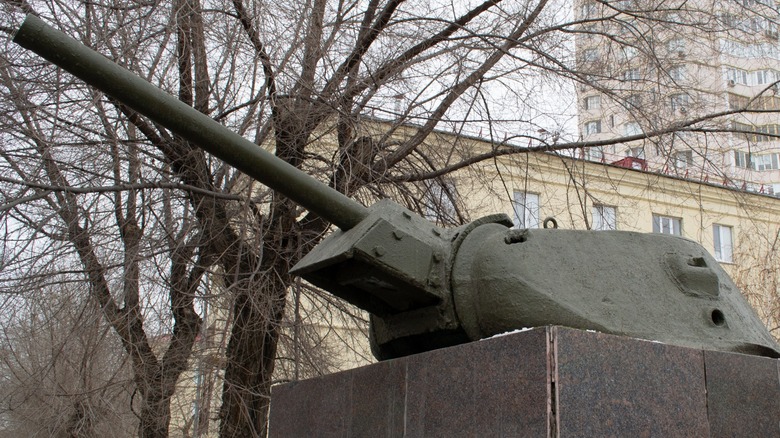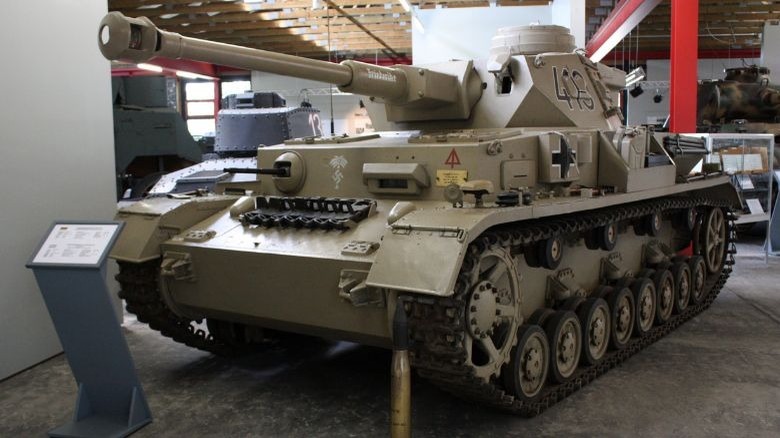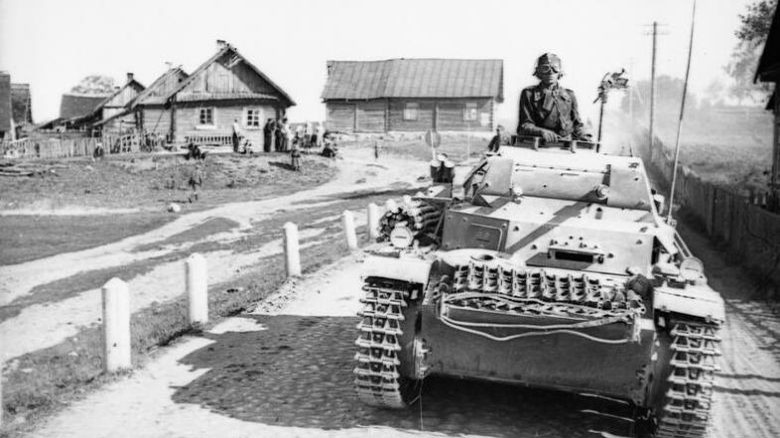Why Did Some Countries Bury Tanks In The Ground During World War II?
During World War II, sparring armies turned to innovation to try and overcome their opposition. While some of these strokes of brilliance came about over time, such as dried blood plasma transfusions and advancements in computers, others were a more immediate response to a growing problem at the start of the war.
Even near the start of the war, Allied armaments featured World War I tanks that, by the standards of the time, were old, slow, and obsolete. Rather than junk them and completely scrap them for parts, though, several Allied nations opted to bury their tanks in the ground. They didn't just dig giant holes and cover the older tanks with dirt, though.
As first adopted by the Soviets for the defense of the Stalin and Molotov lines, these tanks were cemented into the ground as a more permanent encampment. Prior to burial, the engines and treads were removed from the tank, possibly to be repurposed for the war effort. According to the Simple History YouTube channel, these turrets could still revolve, giving operators a range of motion to survey lines of defenses.
Which nations were known for burying their tanks?
While the Soviets implemented entrenched tanks for their defenses, they weren't the only military converting older tanks into viable stationary turrets. Along the Maginot Line in France, forces took the obsolete FT-17, which saw its heyday during World War I, and buried them to prevent German advancement. Simple History also notes Belgium to have buried its tanks, though the practice was not as well documented as in other countries. As Belgian forces did use France's Renault FT-17, it stands to reason that the remaining models from World War I were turned into stationary turrets. Along with defensive armaments, Allied forces also turned the FT radio model, the TSF, into observation posts.
While Allied forces appeared to be the first to start burying their tanks, Germany caught on after the invasion and later occupation of Belgium and France in 1940. By 1942, German forces were using French and Czech tanks to defend the Atlantic wall. Within a year, even the German-made Panzer was being repurposed despite not being obsolete in any way. The practice of burying tanks survived even after World War II. Nearly 100 Panzer IV tanks that had been gifted to Bulgaria during the war were buried along the Bulgarian and Turkish border as a show of force against NATO.
[Featured image by Banznerfahrer via Wikimedia Commons | Cropped and scaled | CC BY-SA 3.0]
German modifications to buried tanks
As the war continued, Germany became a major proponent of burying tanks as a means of defense. As Simple History explains, the up-to-date Panzer armament was primarily used because production of the tank's hulls couldn't keep up. This resulted in several different versions of the Panzer encampments, none of which actually had the body of a tank cemented underground.
Rather, Germany devised entire bunkers beneath the Panzer turret, complete with thicker 16 to 40mm armor to combat powerful tank destroyers, a commander's seat to control the turret, and a steel or concrete-covered compartment below to house the crew. Evidence of Germany's buried concrete bunkers that used Panzer turrets has been excavated in regions like Poland. In 2016, the RAWELIN Group uncovered a Panzerkampwagen II turret in the middle of a Polish field, without a tank hull beneath or found anywhere near it. With no tracks or tank body, the discovery was expected to be one of Germany's mounted turrets.
[Featured image by Bundesarchiv via Wikimedia Commons | Cropped and scaled | CC BY-SA 3.0]


